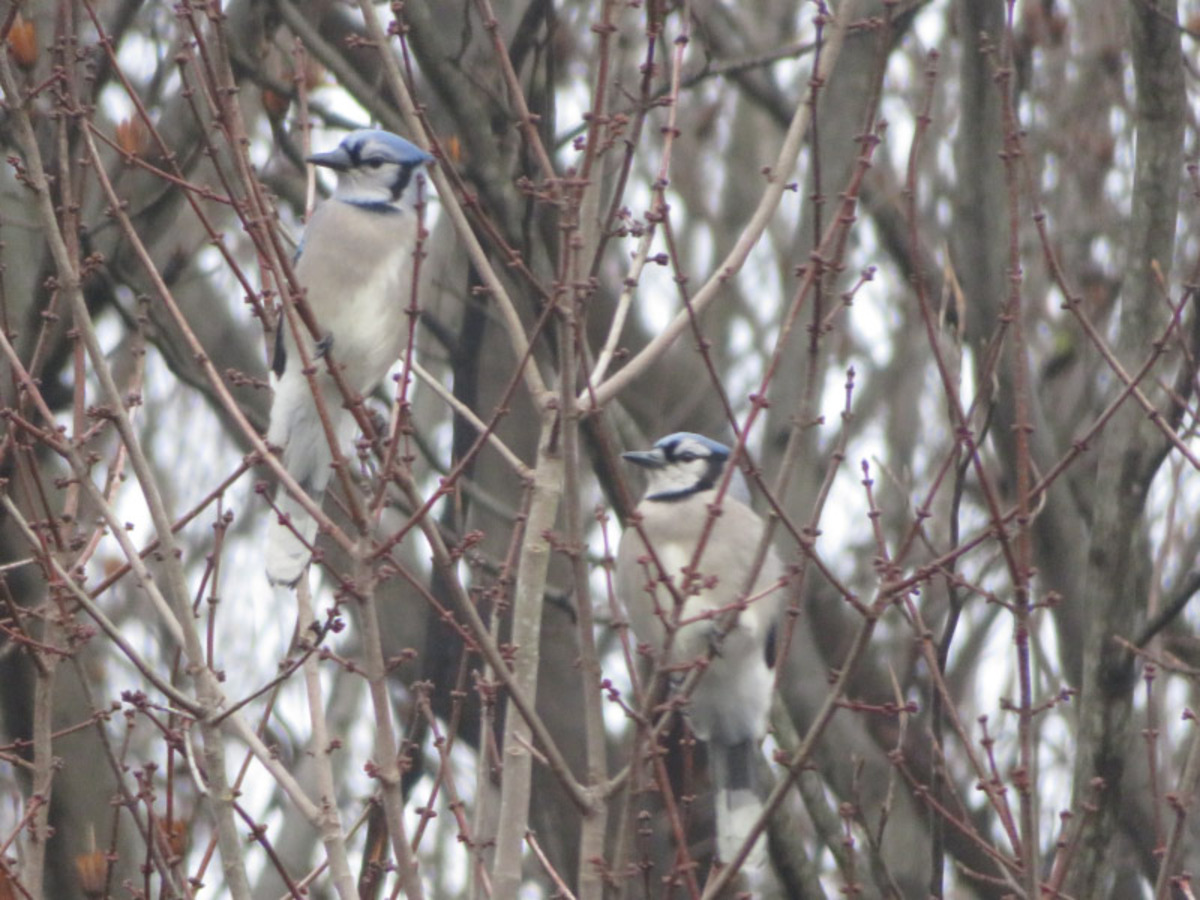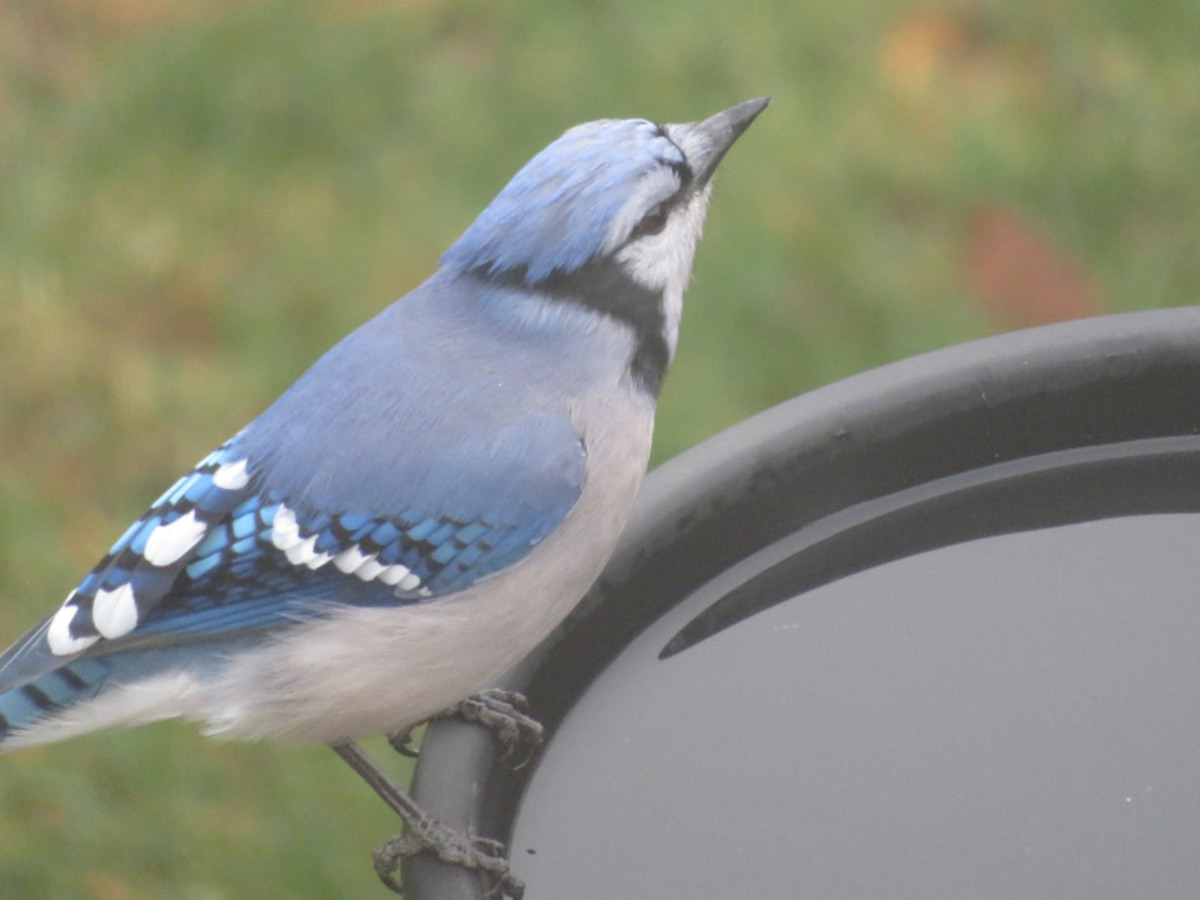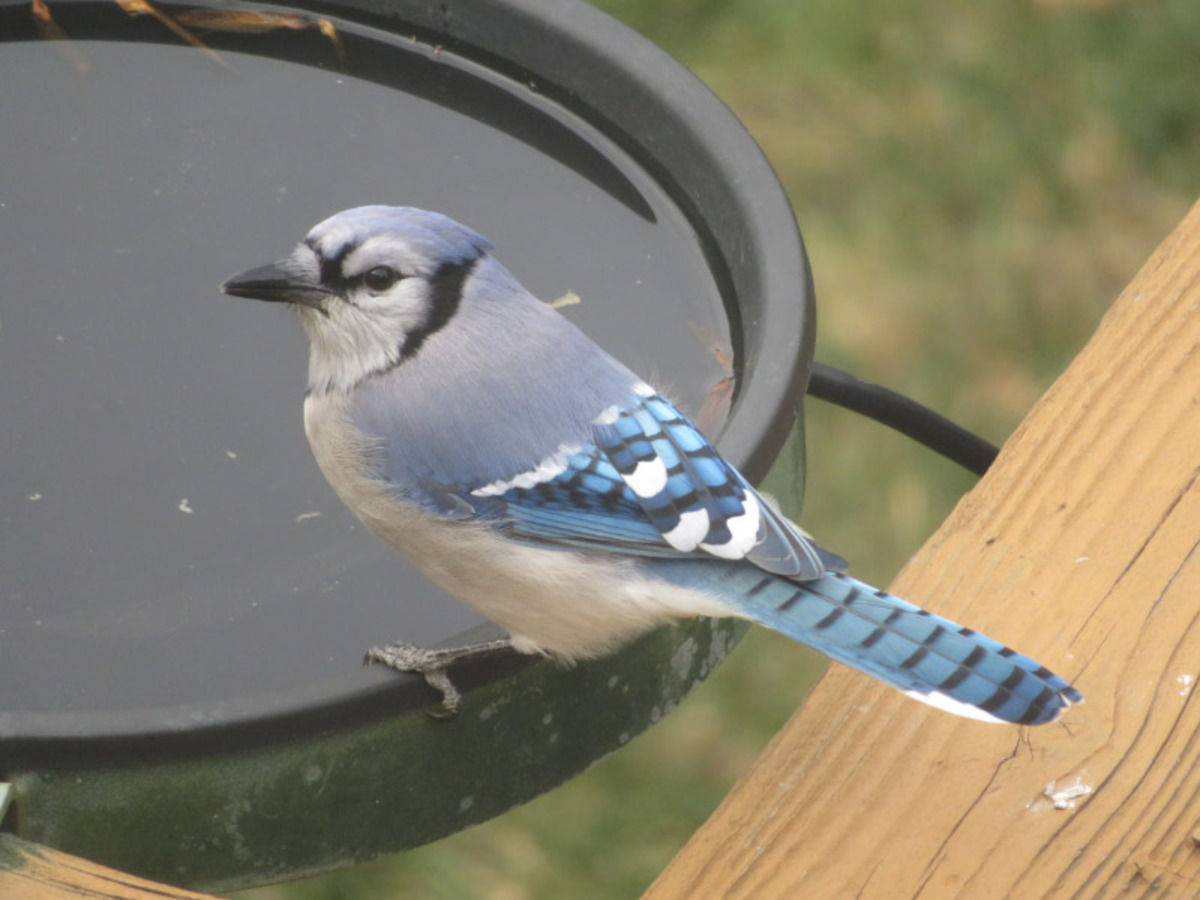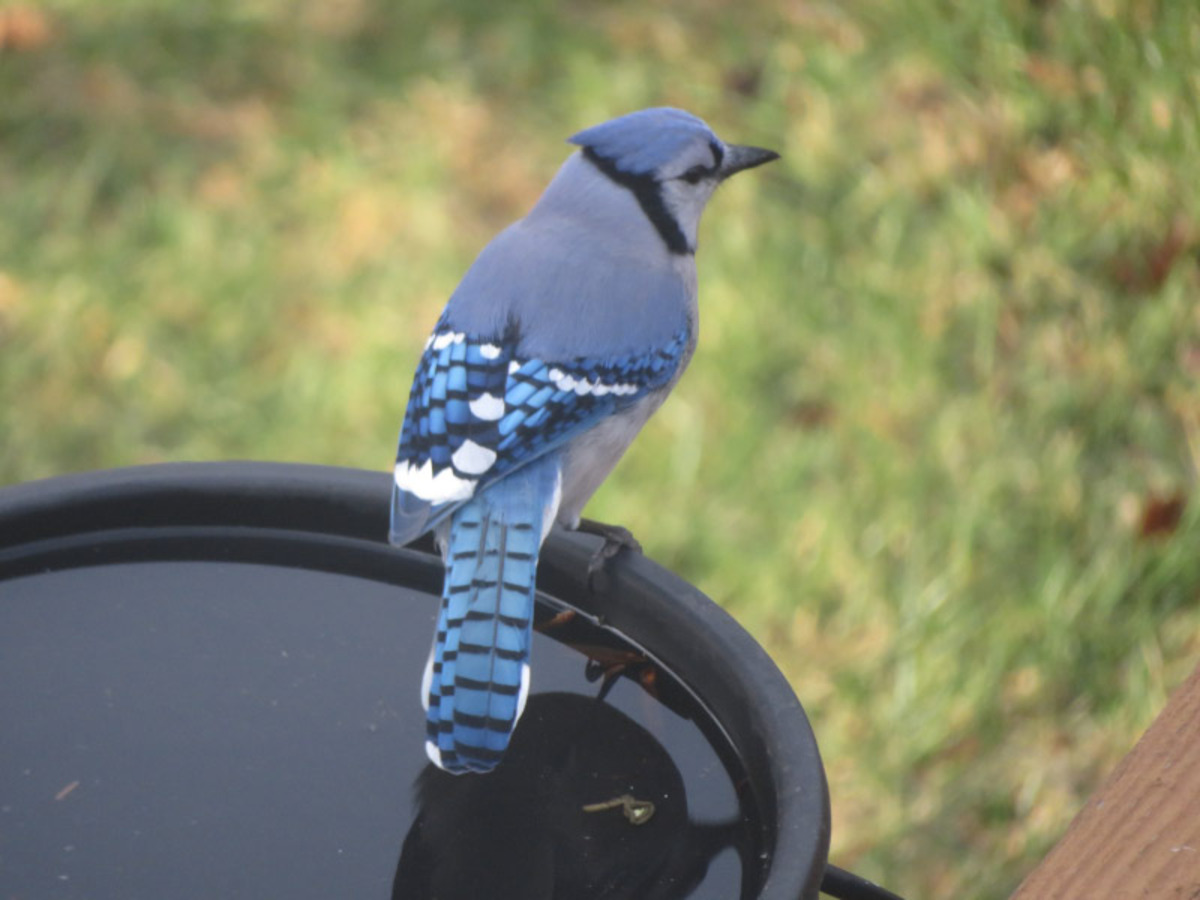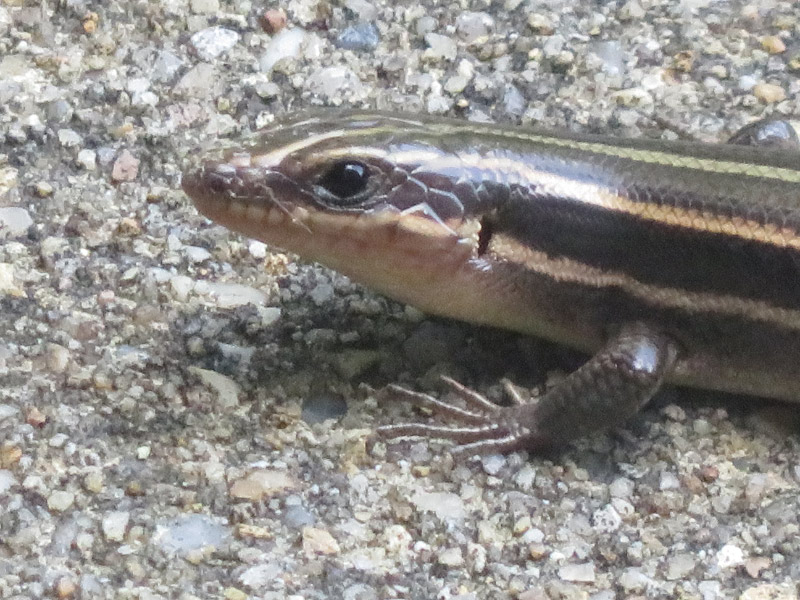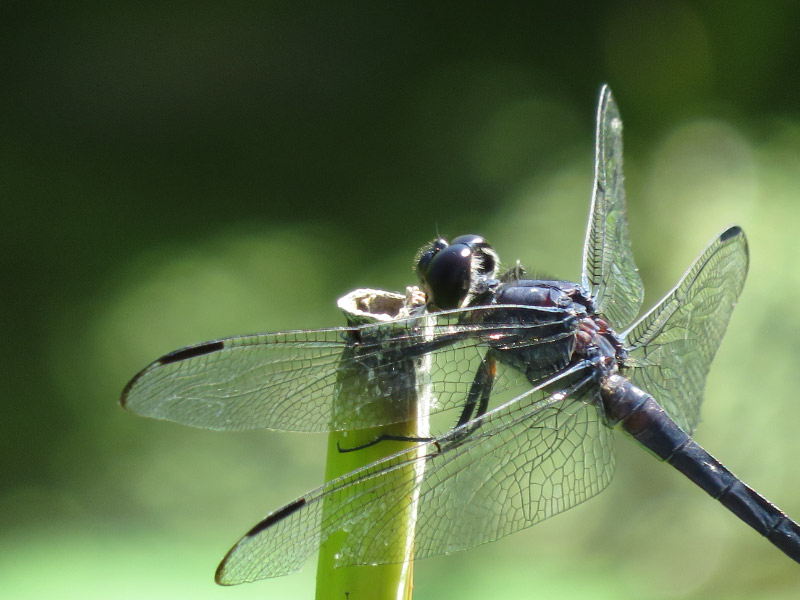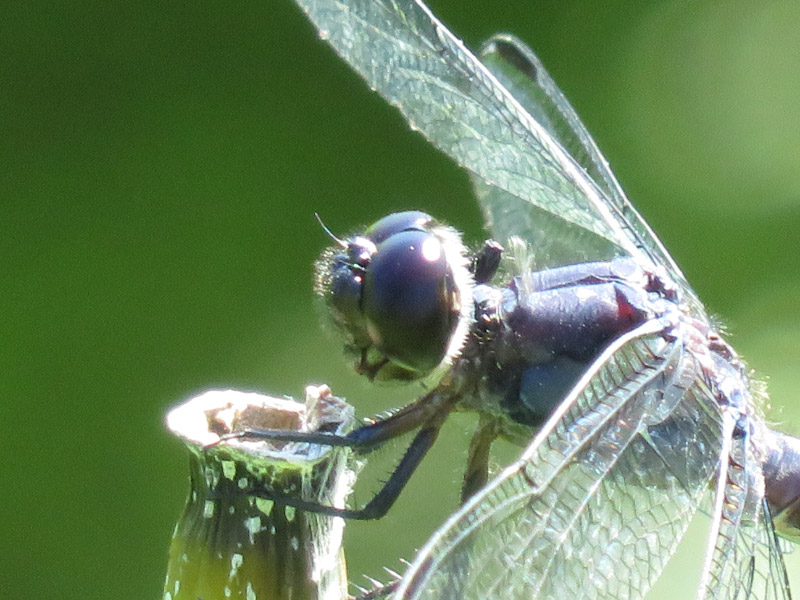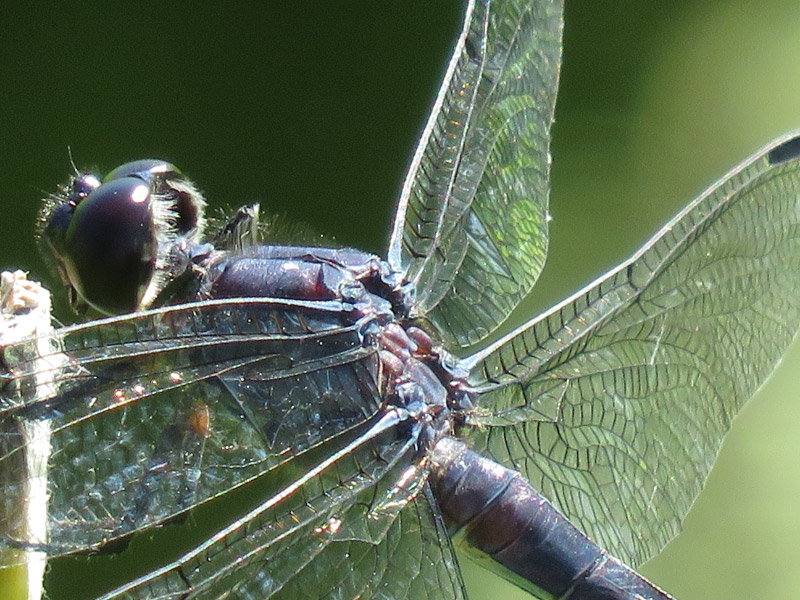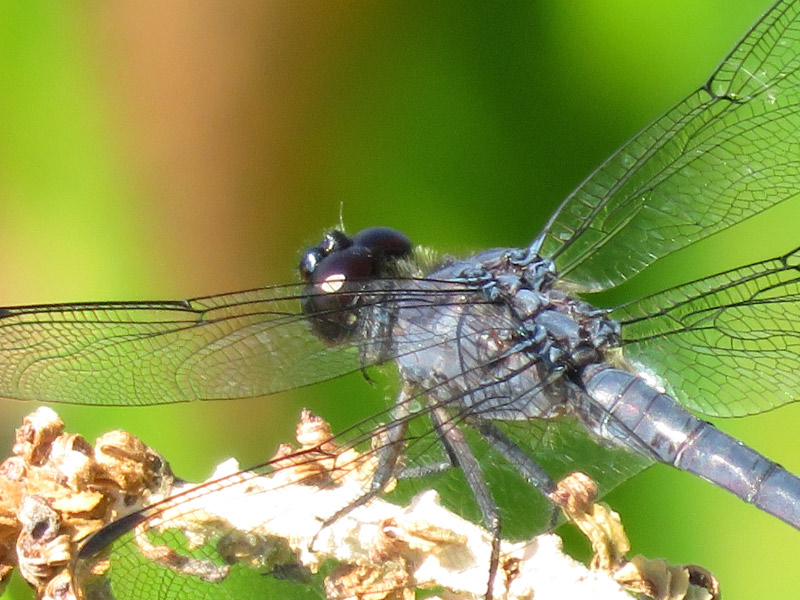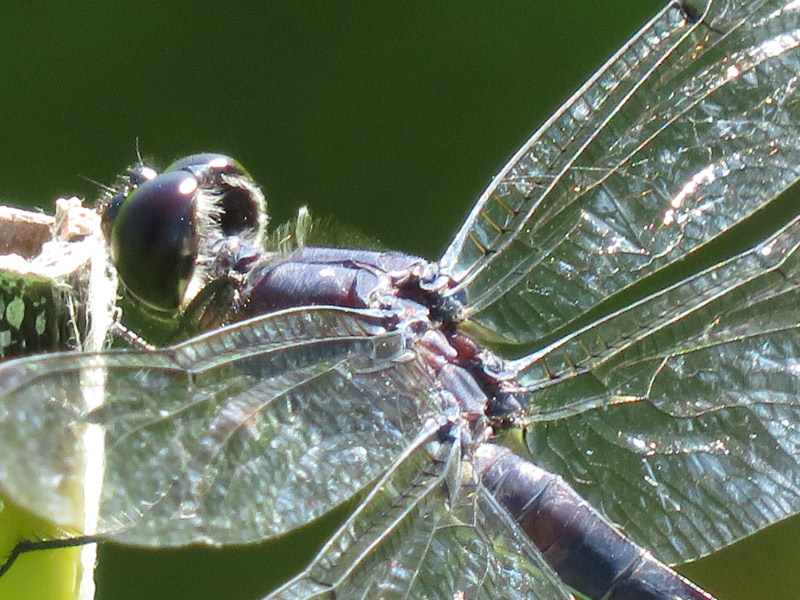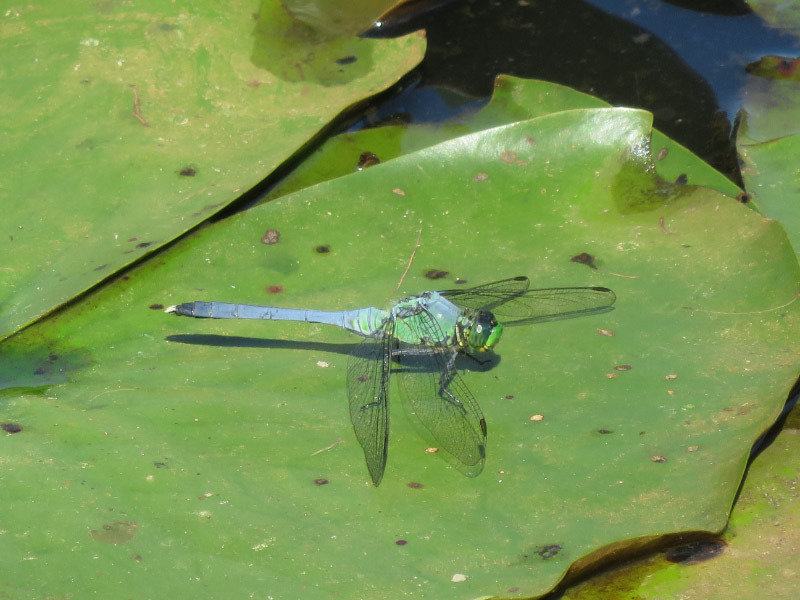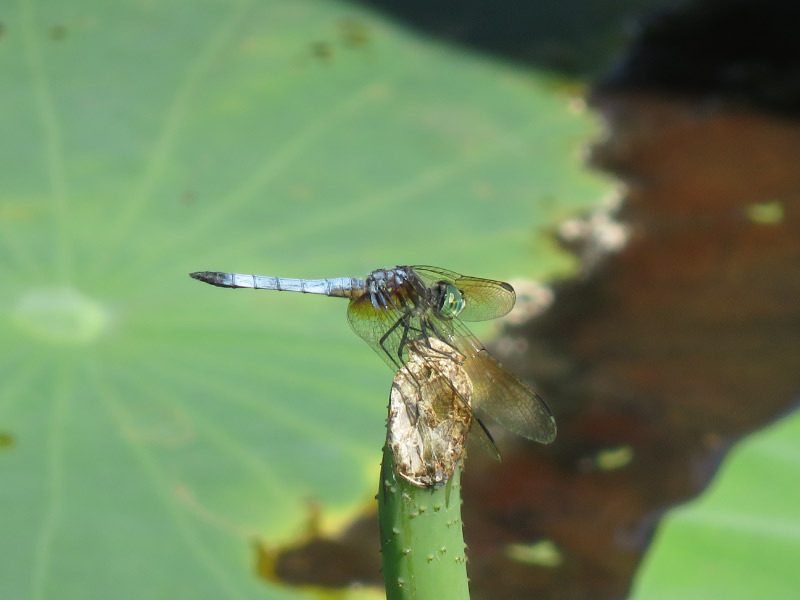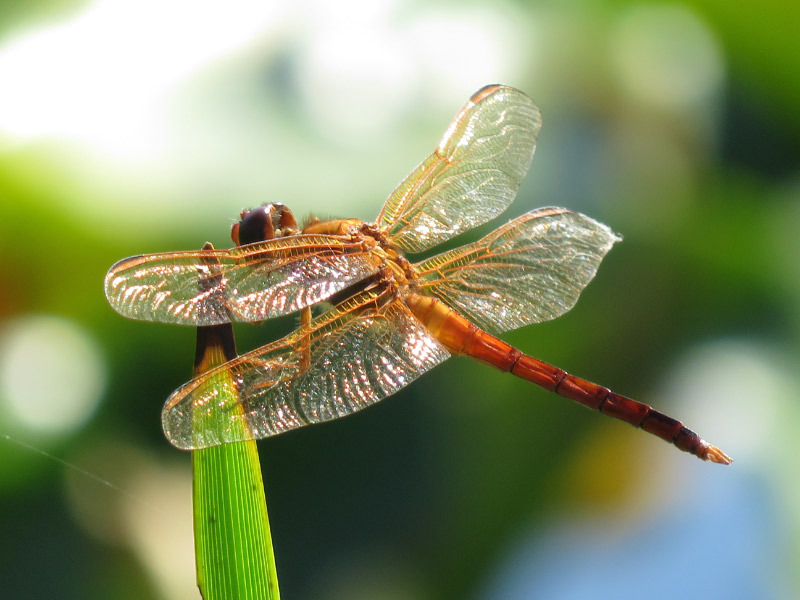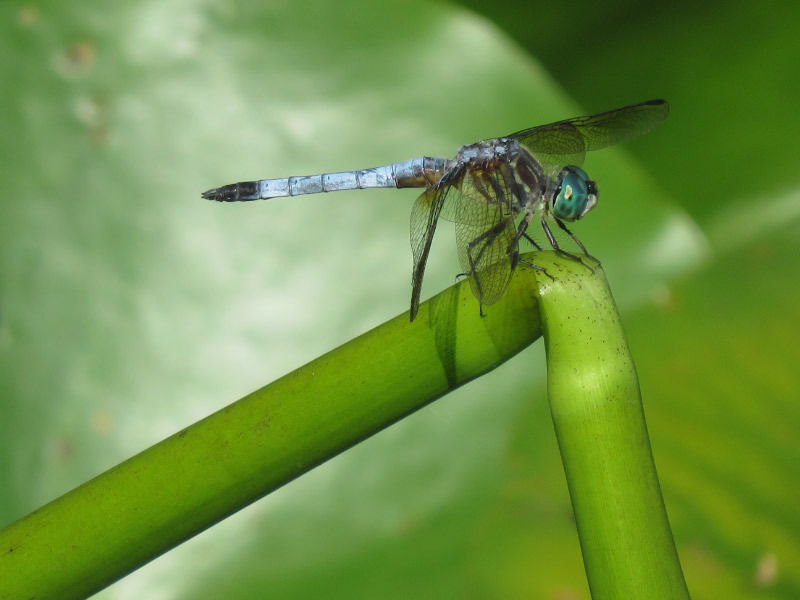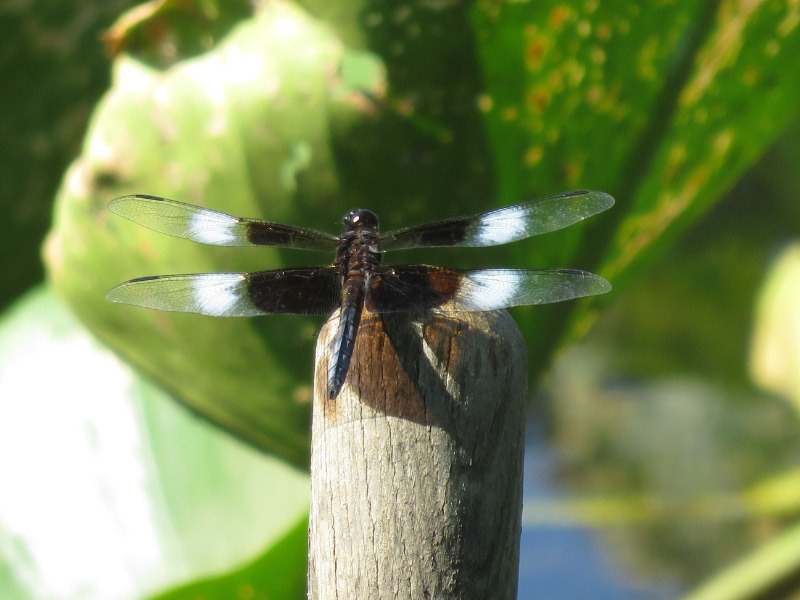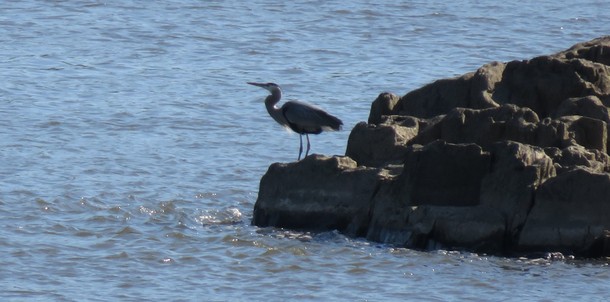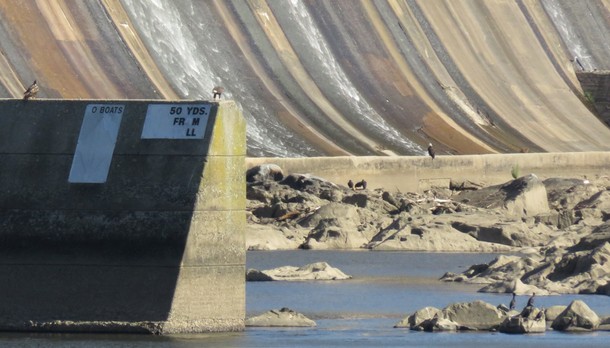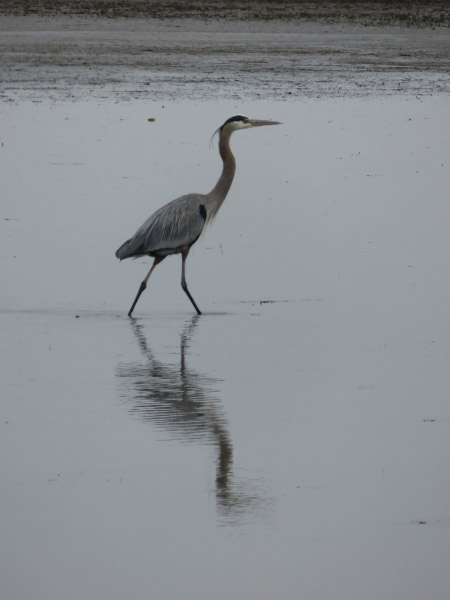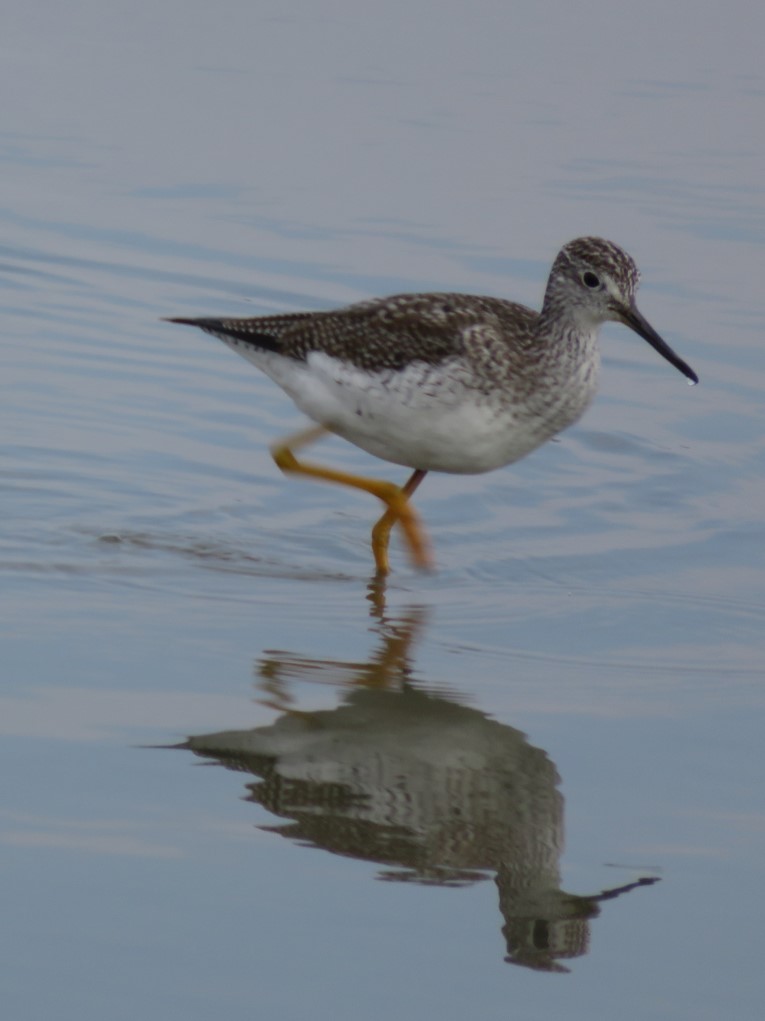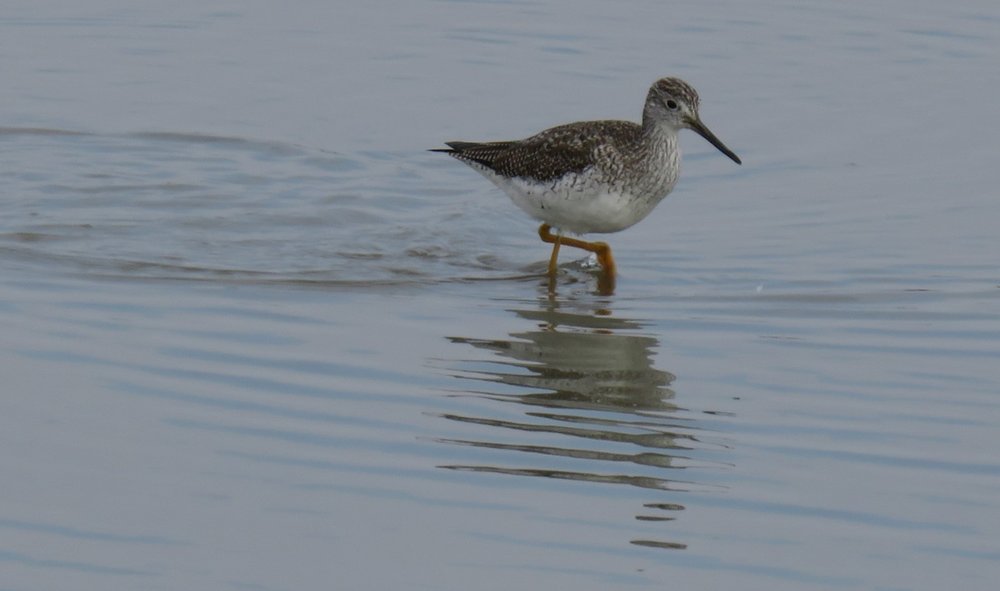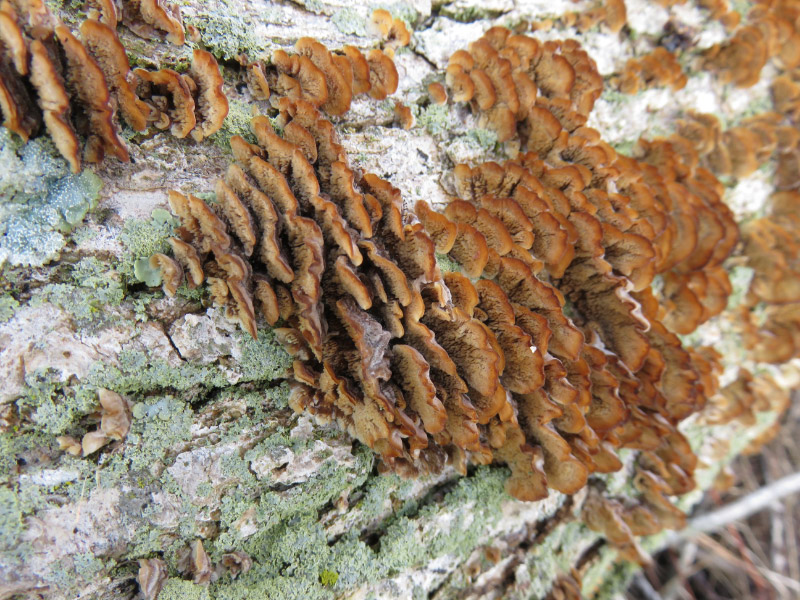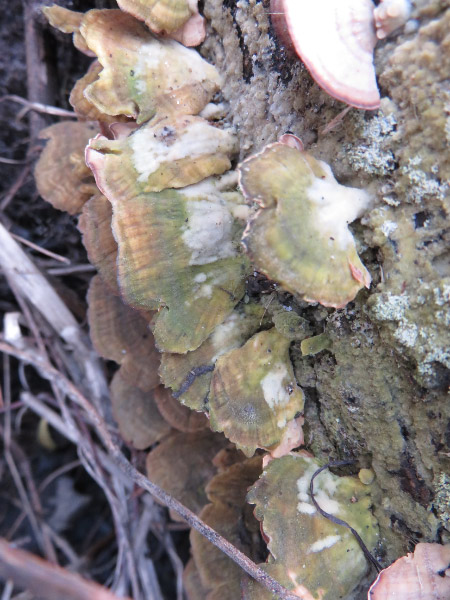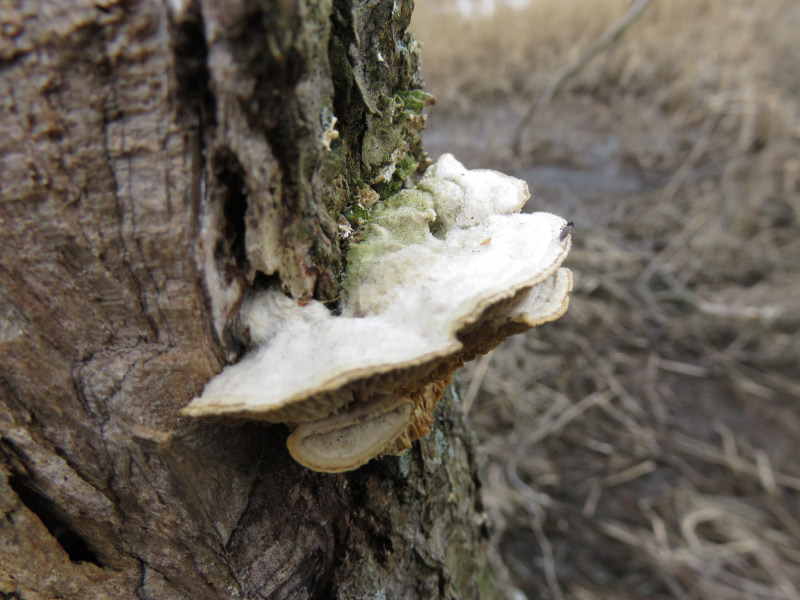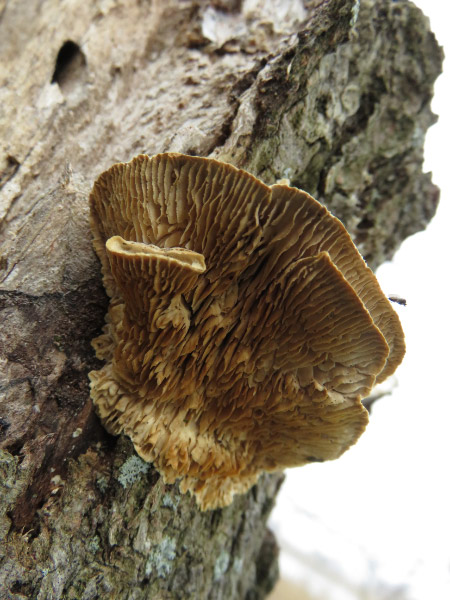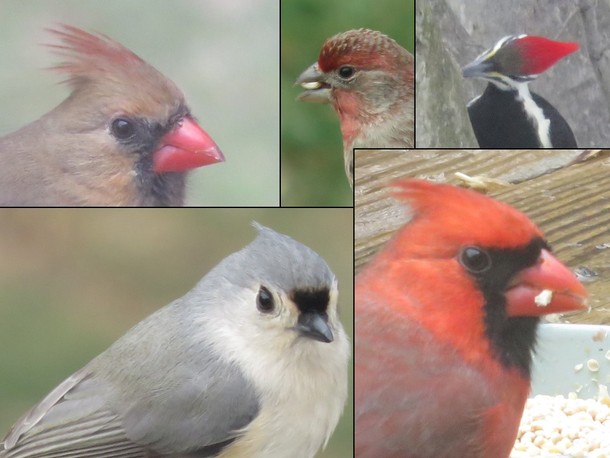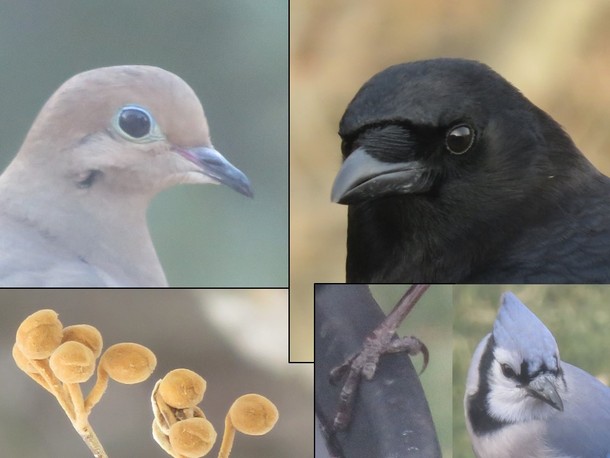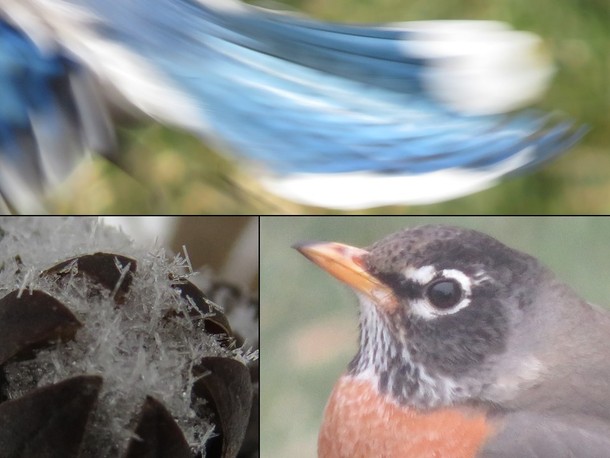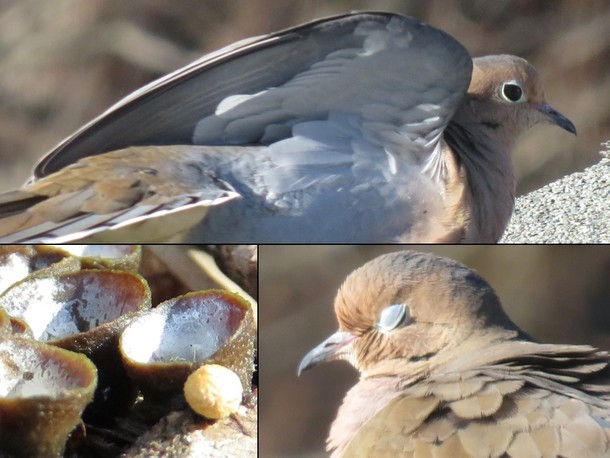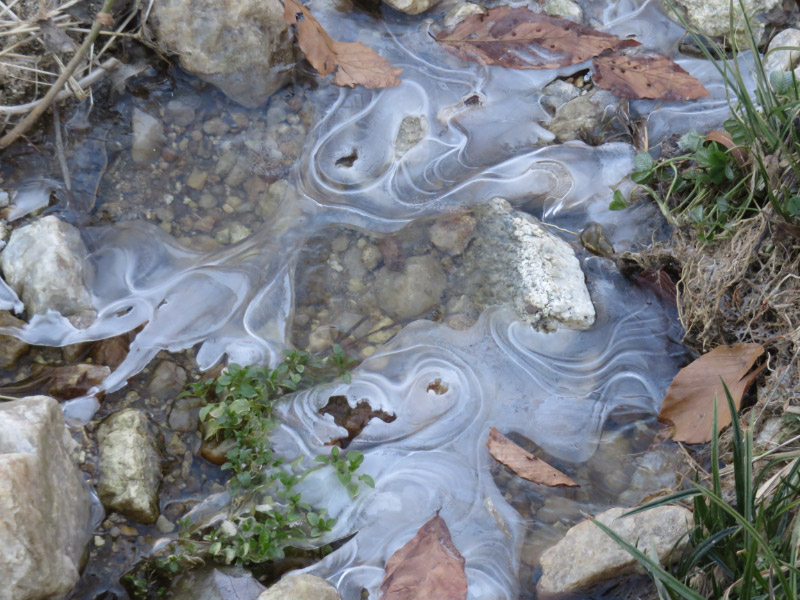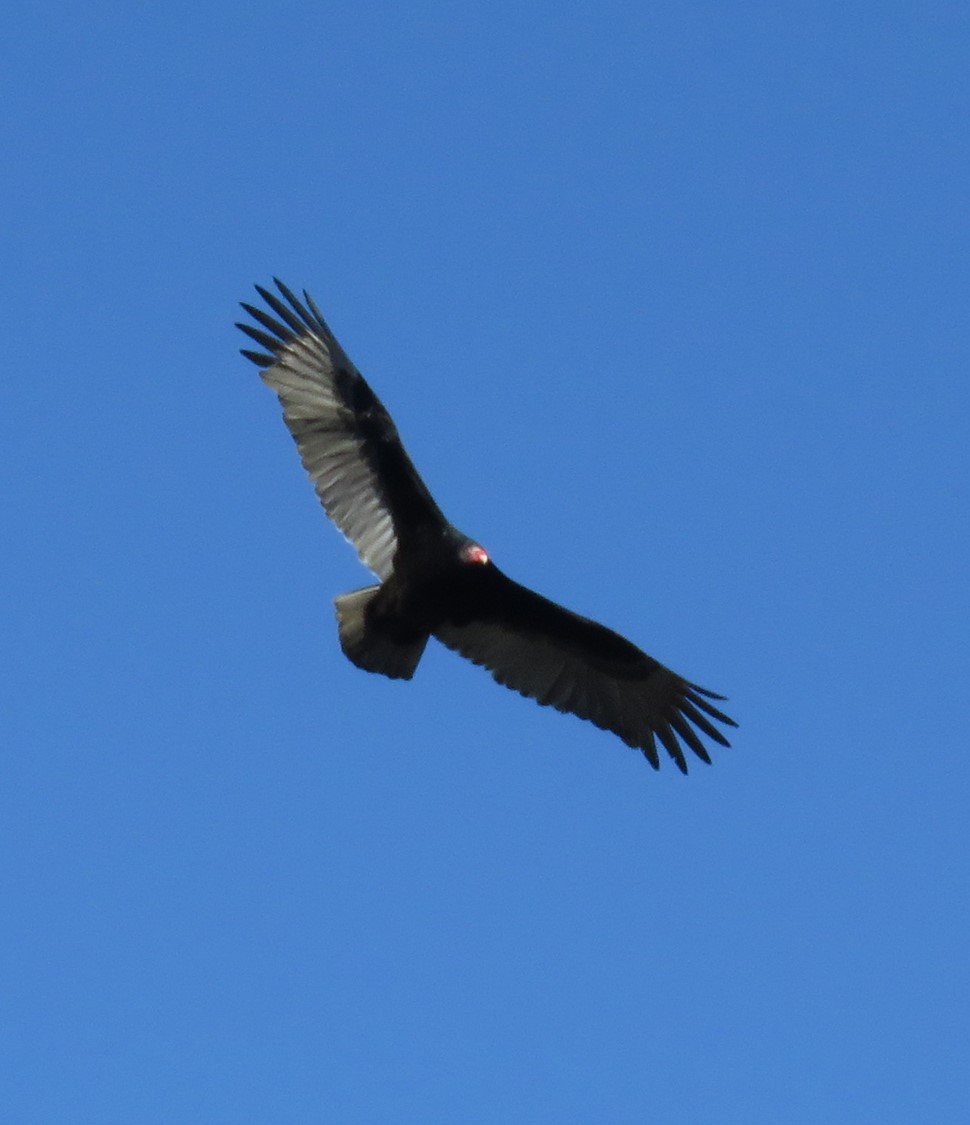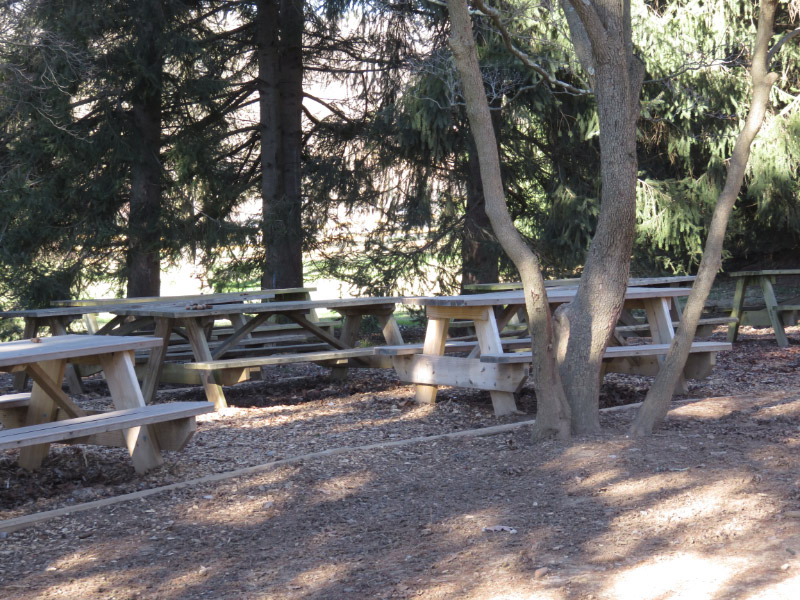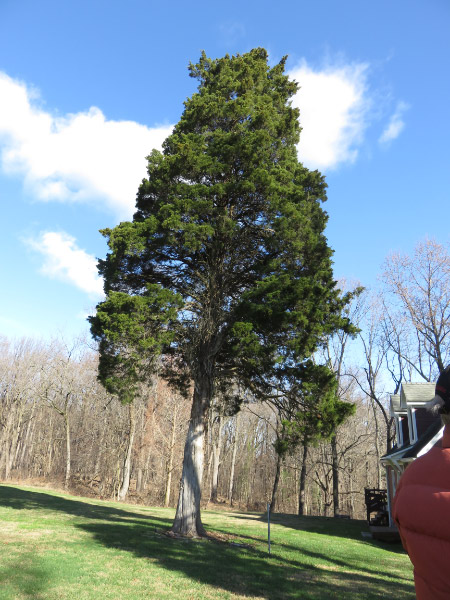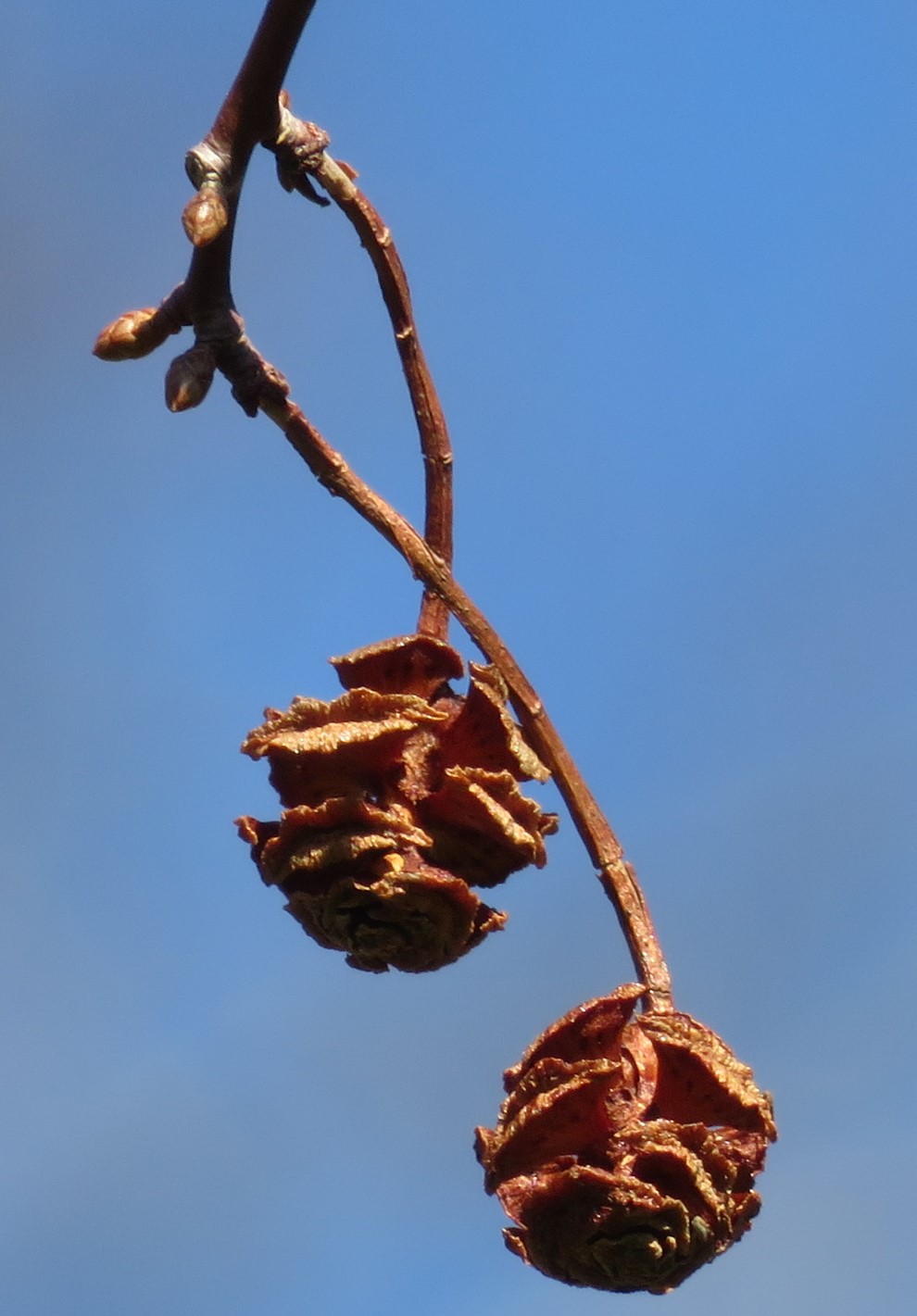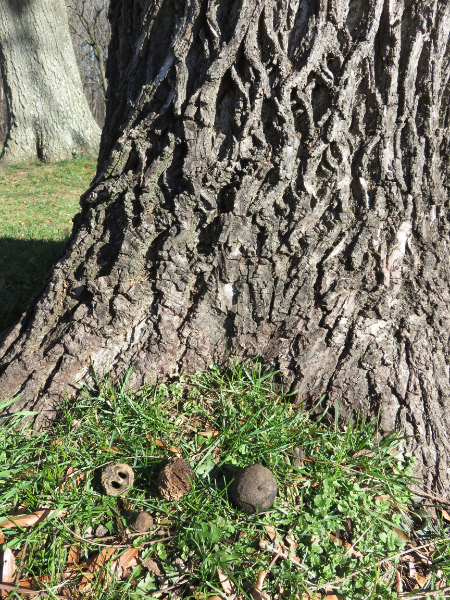Birds Photographed Through a Window – December 2016
/December has been a good month for bird observation through my office window. Our bird bath is particularly popular with blue jays. Note the change from the blue-green bowl early in the month to the heated bowl. I’m not sure whether the blue jays are the most frequent visitors, but they are certainly the noisiest.
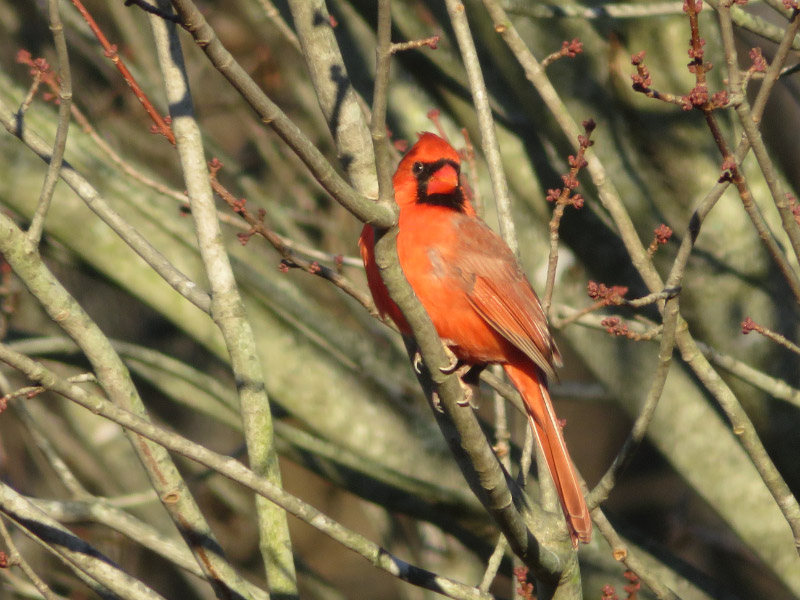
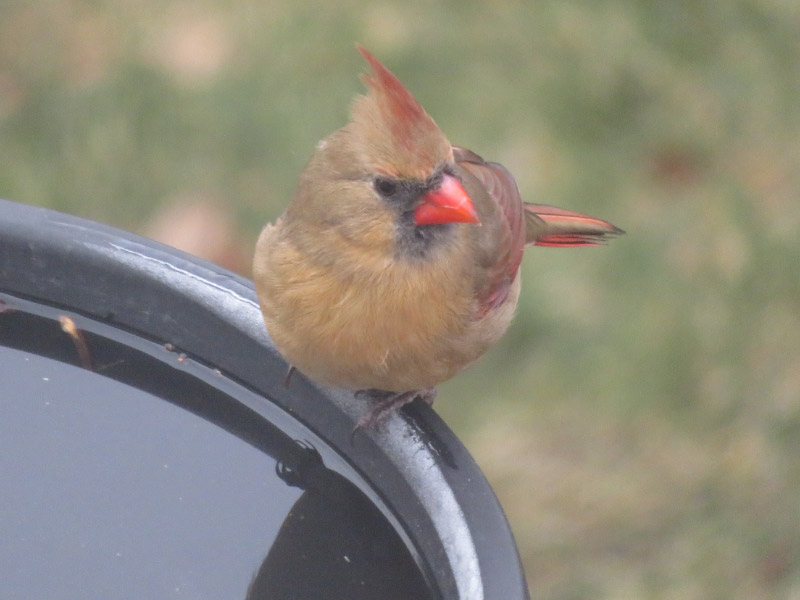

Both the male and female cardinal stop by almost every day. They make small noises so I usually notice then too.
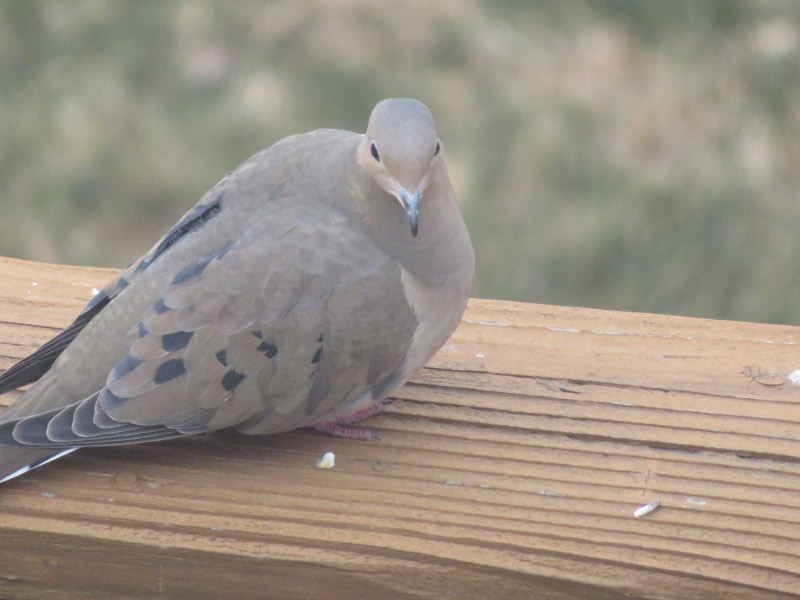
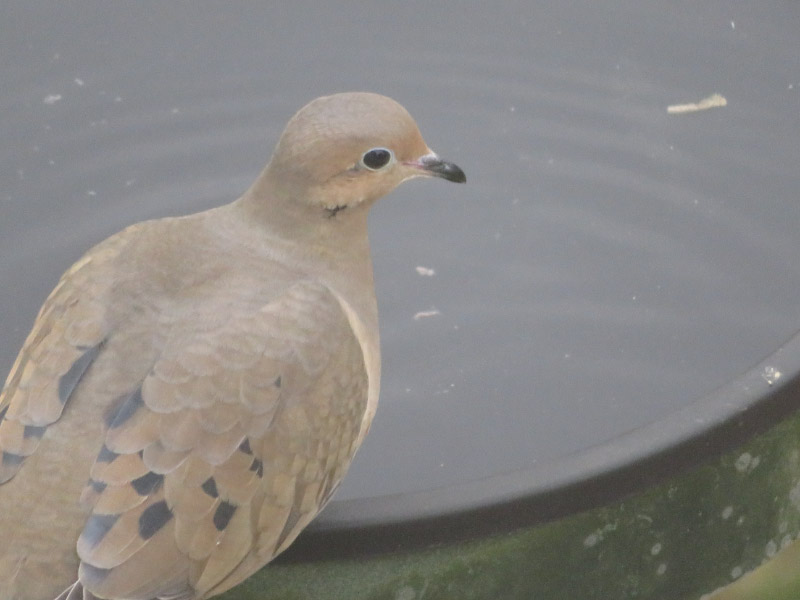
The mourning doves are quiet…but they are big enough to catch my eye as they swoop down to the deck railing.
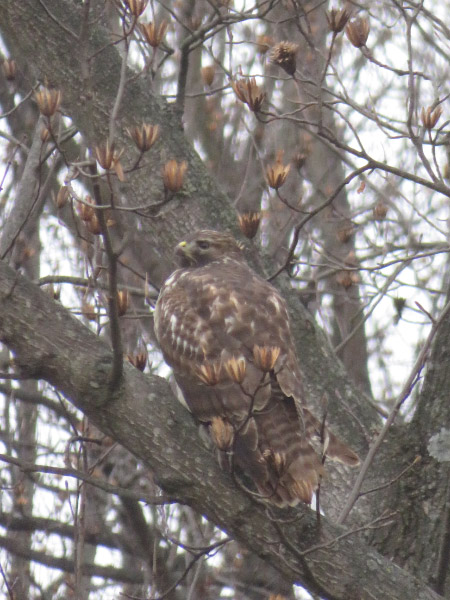
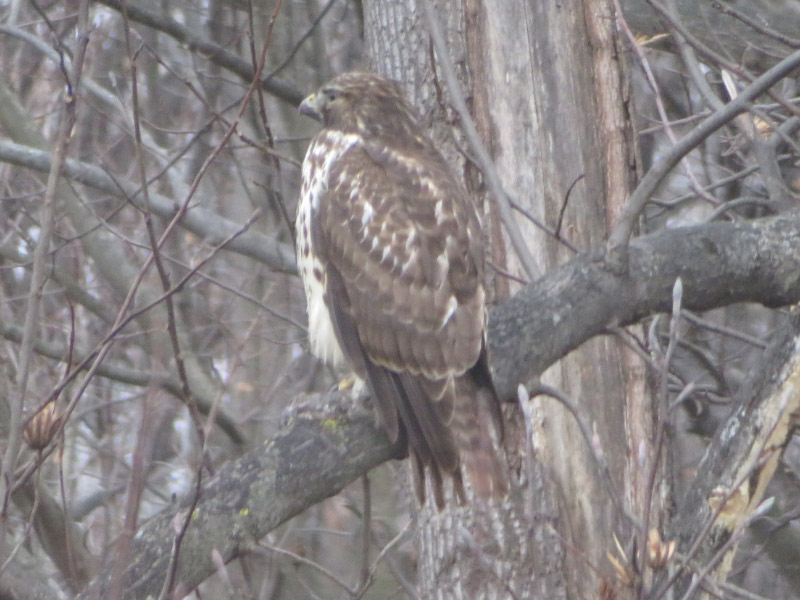
All the other birds hide when the red-tailed hawk flies in to perch in the trees at the forest’s edge behind out house. I like to see raptors, but am glad they are not watching my deck all the time!
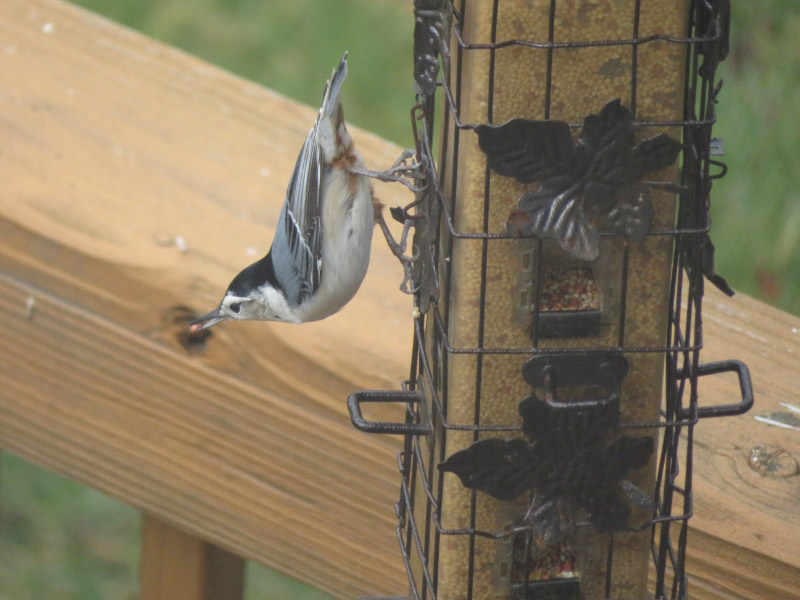
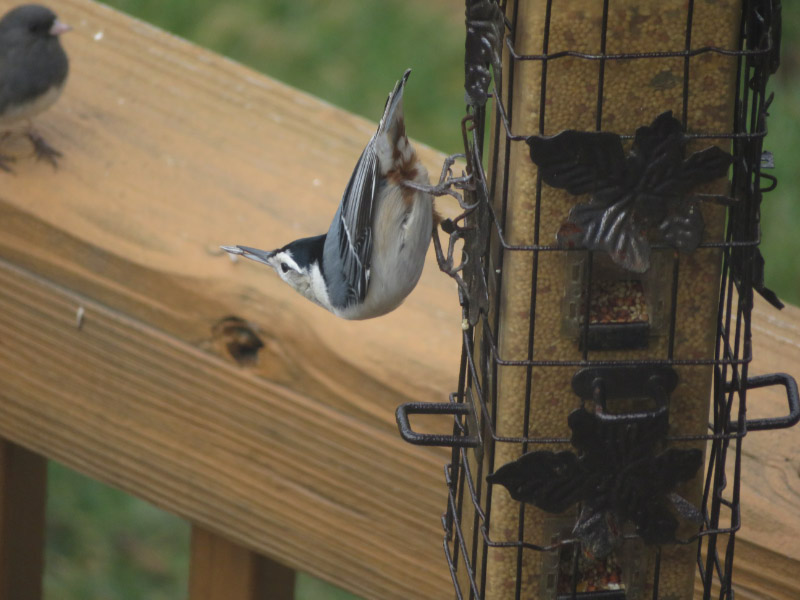
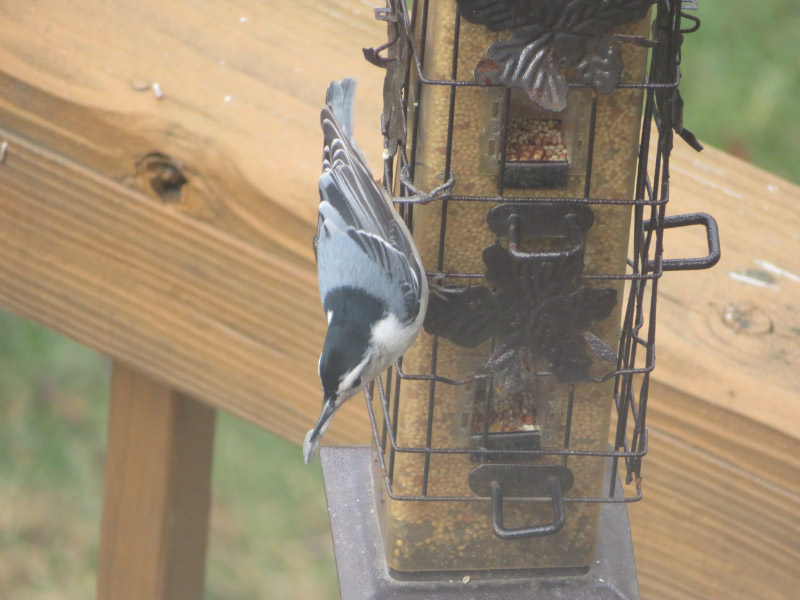
A white breasted nuthatch visited the bird feeder and did the usual upside down acrobatics to pick out individual seeds.
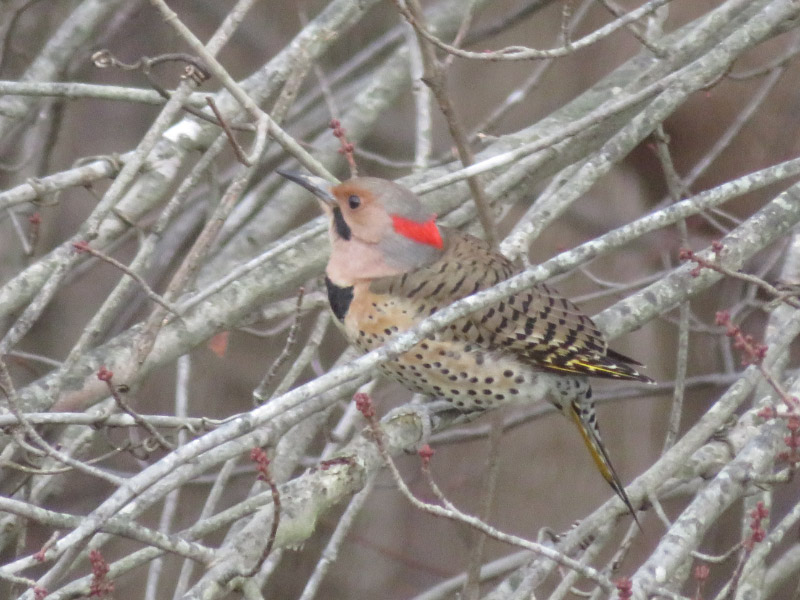
I saw the Northern Flicker (yellow shafted) – just as I did in November; the bird likes the maple. The yellow on the wing and underneath the tail was clearer in the photograph this month.
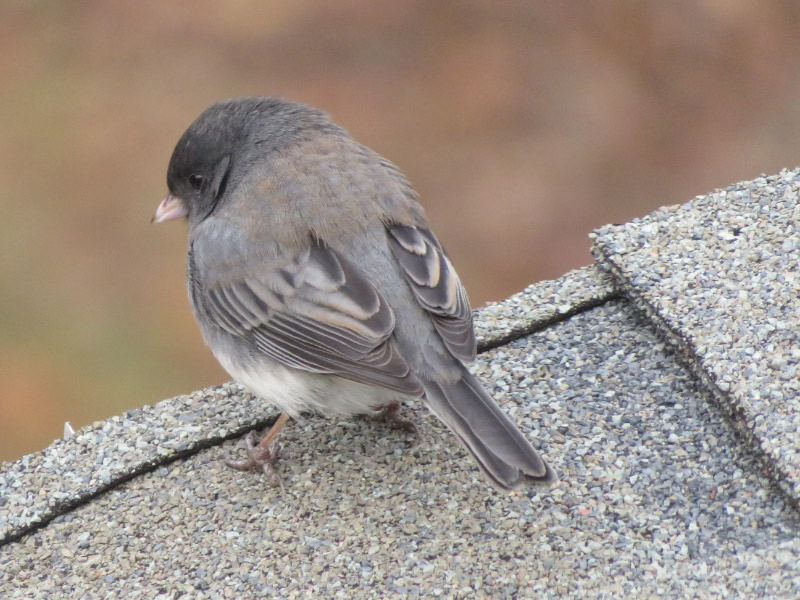
The juncos can be aggressive and chase off some of the other birds. The winter here…a long way from where they have their young in the arctic. I wonder what will happen to their numbers as the arctic warms. They are high energy birds all winter long in Maryland.
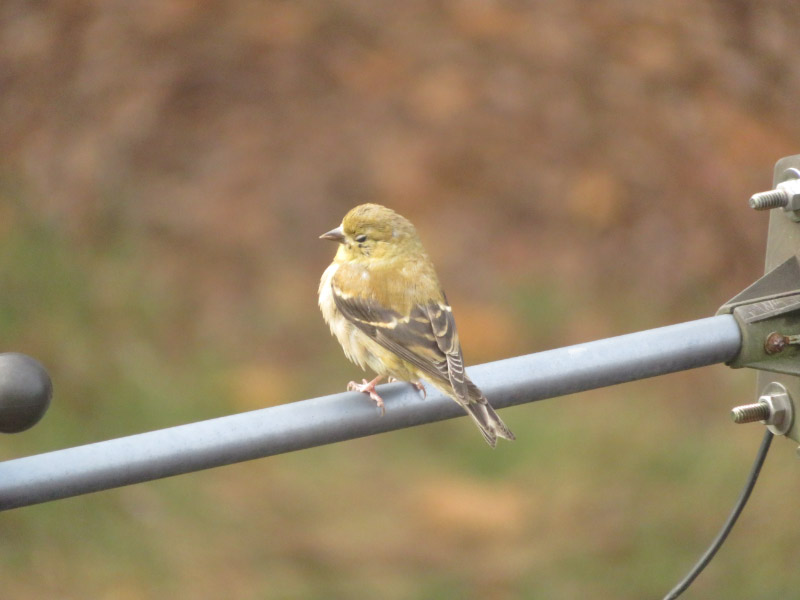
There are some birds that I see less often (because of the swarms of juncos). I saw a sleepy looking male goldfinch in winter plumage.
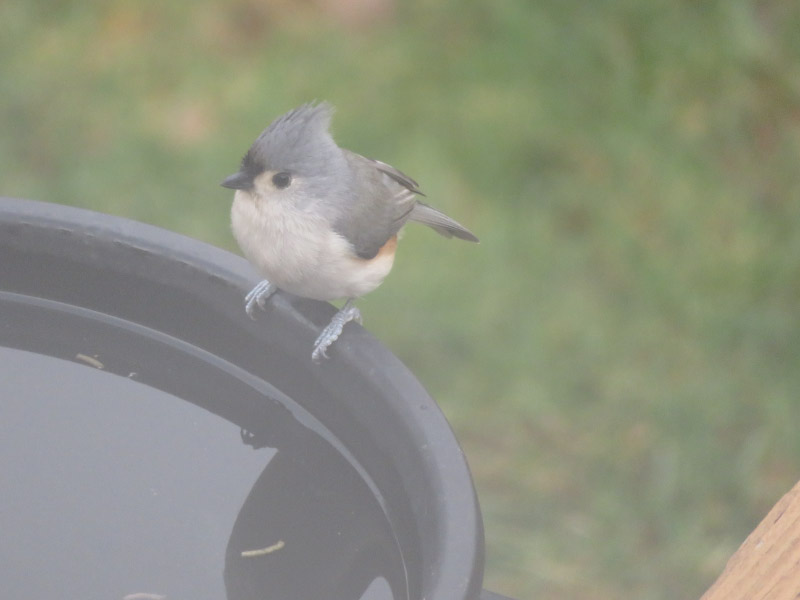
A titmouse got a quick sip at the bird bath before a junco flew in.
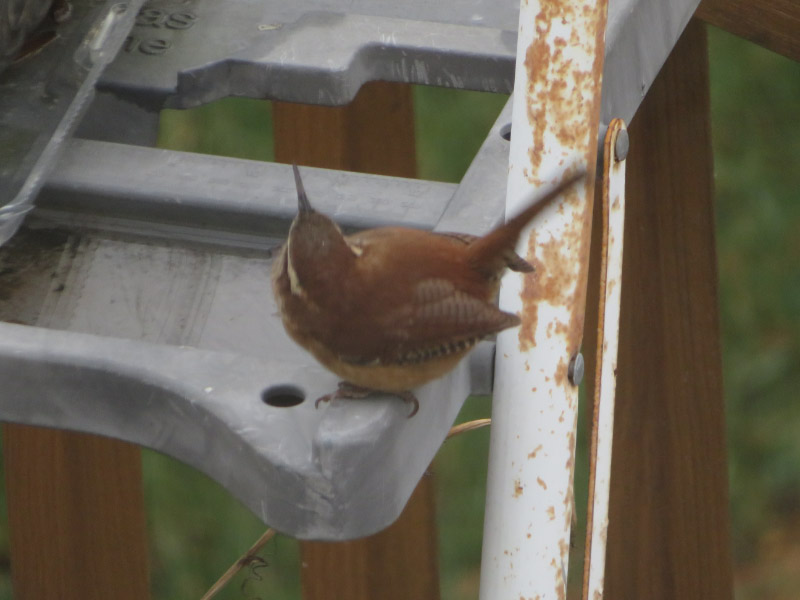
The Carolina wren is still around to but tends to stay clear when the juncos are around. The bird is not a noisy in the winter as when defending territory in the spring and summer.
I’m enjoying the birds of winter!



